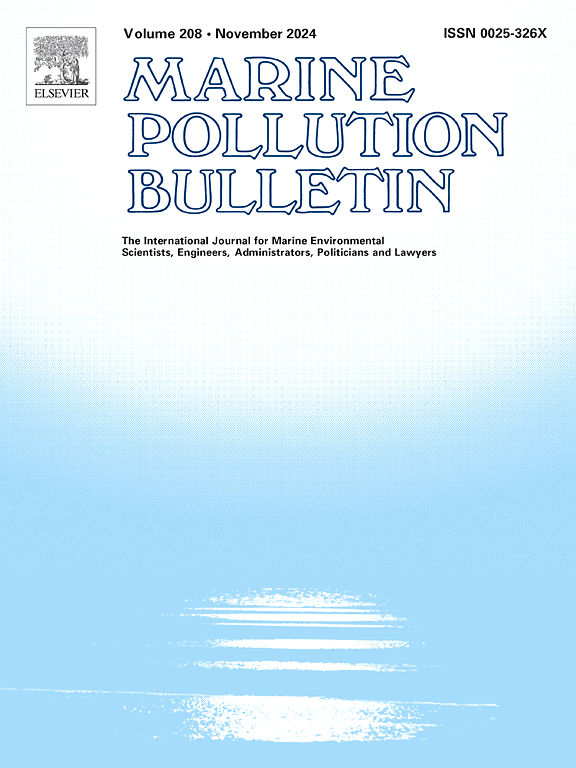Toxic and essential elements determination in edible tissues of different elasmobranch species from Southeastern Brazil and potential human health risks
IF 5.3
3区 环境科学与生态学
Q1 ENVIRONMENTAL SCIENCES
引用次数: 0
Abstract
Brazil is the largest consumer of shark meat, which is sold by fishmongers under the umbrella term cação. The population consumes this meat due to its low cost and lack of fish bones. In this work, morphometric measurements and metal/metalloid concentration (75As, 202Hg, and 82Se) were assessed in the muscle tissue of species from Dasyatis spp., as well as Rhizoprionodon porosus and Zapteryx brevirostris, obtained from Farol de São Tomé beach in Southeastern Brazil. A principal component analysis (PCA) was conducted to evaluate the separation of species based on morphometric variables and elemental concentrations. Additionally, human health risk assessment indices—estimated daily intake (EDI), target hazard quotient (THQ), target cancer risk (TCR), and selenium health benefit values (HBVSe)—were calculated to estimate the risks associated with the consumption of elasmobranch meat in the region. The PCA revealed distinct clustering patterns by species. The human health risk assessment indices indicated potential risks associated with the consumption of the analyzed species. For Dasyatis spp., the EDI of As, THQ of inorganic As (iAs), and TCR exceeded their respective thresholds. For R. porosus, the EDI of As, THQ of iAs and Se, and TCR exceeded the established thresholds. For Z. brevirostris, the EDI of As and Hg, THQ of iAs and MeHg, TCR, and HBVSe exceeded the thresholds. These results suggest a potential risk to public health associated with the consumption of elasmobranch meat from the analyzed species, especially Z. brevirostris.
求助全文
约1分钟内获得全文
求助全文
来源期刊

Marine pollution bulletin
环境科学-海洋与淡水生物学
CiteScore
10.20
自引率
15.50%
发文量
1077
审稿时长
68 days
期刊介绍:
Marine Pollution Bulletin is concerned with the rational use of maritime and marine resources in estuaries, the seas and oceans, as well as with documenting marine pollution and introducing new forms of measurement and analysis. A wide range of topics are discussed as news, comment, reviews and research reports, not only on effluent disposal and pollution control, but also on the management, economic aspects and protection of the marine environment in general.
 求助内容:
求助内容: 应助结果提醒方式:
应助结果提醒方式:


